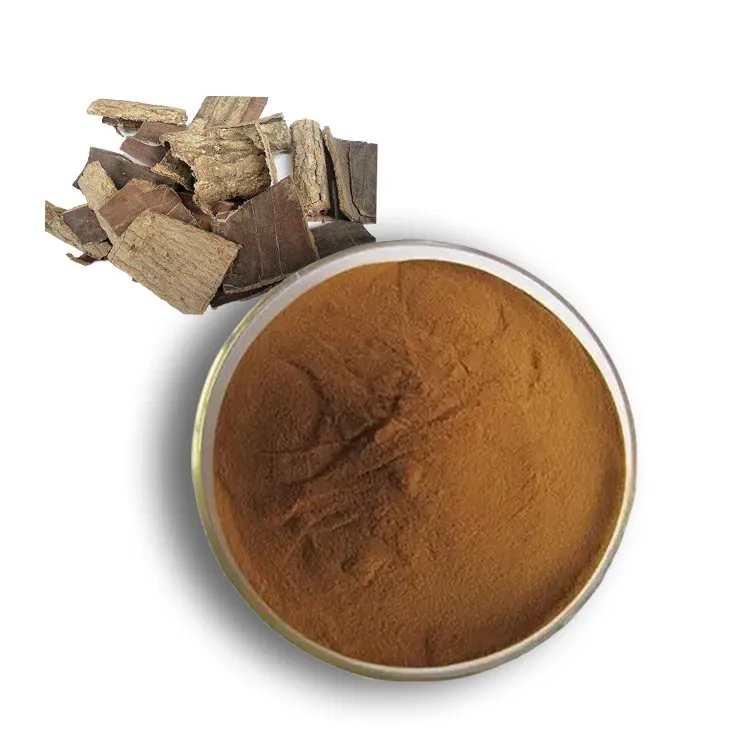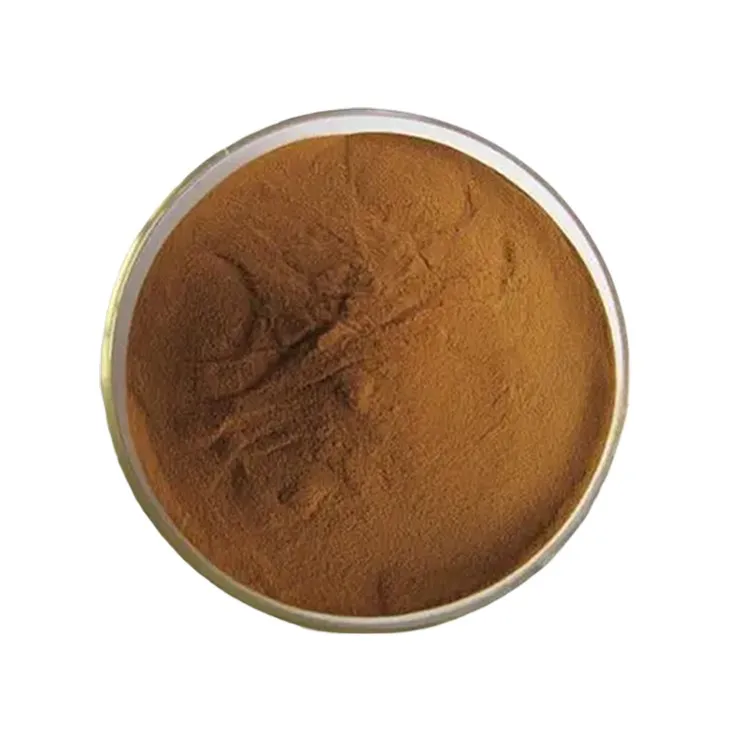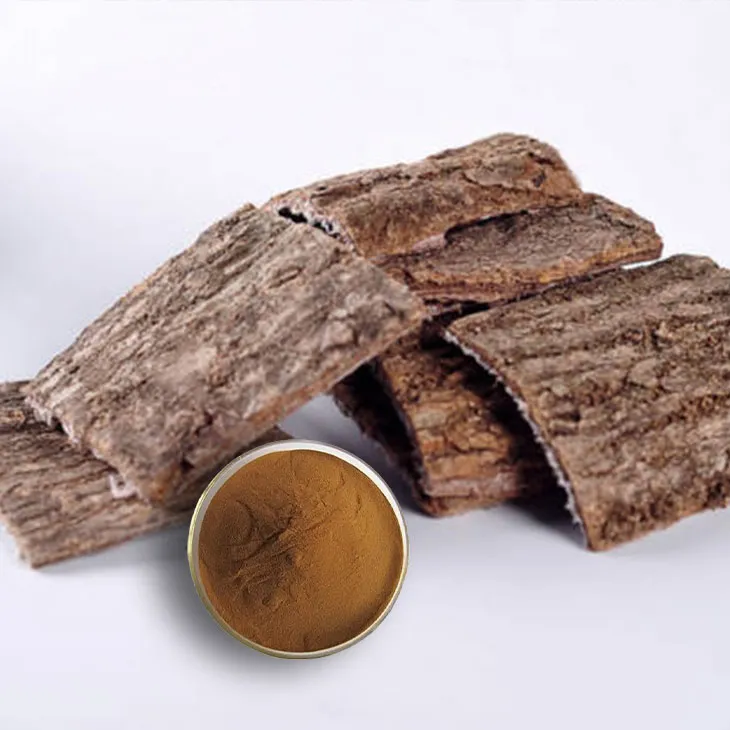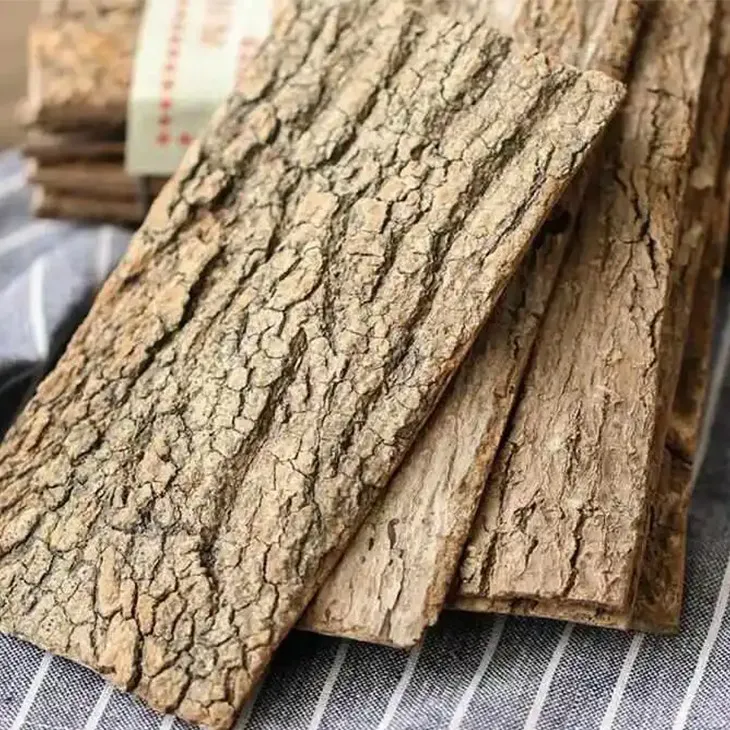- 0086-571-85302990
- sales@greenskybio.com
The best source of natural Eucommia ulmoides extracts.
2024-11-27

Introduction
Eucommia ulmoides has a long - standing reputation in traditional medicine, being known for its various medicinal properties for centuries. The extract of Eucommia ulmoides is rich in bioactive compounds that are beneficial for human health. However, the quality of the extract can vary significantly depending on several factors. This article aims to explore these factors in detail to determine the best sources for obtaining high - quality, natural Eucommia Ulmoides Extracts.

Climate and its impact on Eucommia ulmoides
1. Temperature
Eucommia ulmoides generally thrives in temperate climates. Moderate temperatures are crucial for its growth. In regions where the temperature is too cold, especially during the winter months, the growth of the plant may be stunted. Frost can damage the young shoots and leaves of Eucommia ulmoides, which in turn can affect the quality and quantity of the extractable compounds. For example, in areas with extremely low winter temperatures, the biosynthesis of certain active substances in the plant may be disrupted.
2. Precipitation
An adequate amount of rainfall is necessary for Eucommia ulmoides. Insufficient precipitation can lead to water stress in the plants, causing the leaves to wilt and reducing the photosynthetic efficiency. On the other hand, excessive rainfall can also pose problems, such as waterlogging, which may lead to root rot. The ideal precipitation pattern should be well - distributed throughout the year, ensuring that the plant has enough water for growth without being overly saturated. In regions with a balanced precipitation regime, the Eucommia ulmoides plants are likely to produce a higher yield of quality extract.
3. Seasonal variations
The changing seasons also play a role in the growth and development of Eucommia ulmoides. During the spring and summer, the plant experiences rapid growth, with increased production of leaves and stems. This is also the time when the biosynthesis of many bioactive compounds is at its peak. Autumn brings about changes in the plant, such as leaf senescence, which can affect the distribution of nutrients within the plant. Understanding these seasonal variations can help in determining the optimal time for harvesting Eucommia ulmoides to obtain the best extract.

Soil type and its influence
1. Soil texture
Soil texture is an important factor. Eucommia ulmoides prefers well - drained soils. Sandy loam or loam soils are often considered ideal. Sandy soils provide good drainage but may lack in nutrient - holding capacity. Clay soils, on the other hand, may have poor drainage and can lead to waterlogging problems. Loam soils strike a balance, with good drainage and sufficient nutrient - holding capacity. In soils with the right texture, the roots of Eucommia ulmoides can grow more freely, absorbing water and nutrients effectively, which is beneficial for the production of high - quality extracts.
2. Soil fertility
The fertility of the soil is directly related to the nutrient content available to the Eucommia ulmoides plant. Soils rich in organic matter, nitrogen, phosphorus, and potassium are favorable for its growth. Organic matter improves soil structure, enhances water - holding capacity, and provides a slow - release source of nutrients. Adequate nitrogen is necessary for the synthesis of proteins and enzymes in the plant, while phosphorus is important for root development and energy transfer. Potassium helps in maintaining the osmotic balance and improving the plant's resistance to diseases. In fertile soils, Eucommia ulmoides plants are more likely to produce extracts with a higher concentration of bioactive compounds.
3. Soil pH
The pH of the soil also affects the growth of Eucommia ulmoides. A slightly acidic to neutral pH range (around 6.0 - 7.0) is generally considered optimal. In soils with a very acidic pH, certain nutrients may become unavailable to the plant, while in highly alkaline soils, toxicities may occur. For example, in acidic soils, aluminum toxicity can be a problem, which can inhibit the growth of Eucommia ulmoides. Maintaining the appropriate soil pH is crucial for ensuring the healthy growth of the plant and the production of high - quality extracts.

Altitude and its significance
Altitude can have a profound impact on Eucommia ulmoides. 1. Temperature and climate variations At higher altitudes, the temperature is generally lower, and the climate can be more variable. This can lead to slower growth of Eucommia ulmoides, but it may also result in the accumulation of certain bioactive compounds. For example, in some mountainous regions at higher altitudes, the plants may be exposed to more intense sunlight and greater temperature differences between day and night. These conditions can stimulate the production of secondary metabolites, which are often the key components of the extract.
2. Atmospheric pressure and gas exchange Lower atmospheric pressure at higher altitudes can affect the gas exchange of Eucommia ulmoides. This can influence the photosynthetic process and the uptake of carbon dioxide. The plant may adapt to these conditions by adjusting its physiological mechanisms, which may in turn affect the composition of the extract. However, extreme altitudes may also pose challenges such as harsher environmental conditions that can limit the growth of the plant.
3. Ecological environment Higher altitudes often have a different ecological environment compared to lower - lying areas. The presence of different plant species, insects, and microorganisms can interact with Eucommia ulmoides in various ways. For instance, some insects may act as pollinators, while certain microorganisms in the soil can help in nutrient cycling. These ecological interactions can indirectly affect the quality of the Eucommia Ulmoides Extract.

Cultivation techniques and their impact on extract potency
1. Planting density
The appropriate planting density is crucial for the growth of Eucommia ulmoides. If the plants are planted too closely together, they will compete for resources such as sunlight, water, and nutrients. This can lead to stunted growth and a lower yield of extract. On the other hand, if the plants are planted too sparsely, the land may not be utilized efficiently. A well - planned planting density can ensure that each plant has enough space to grow and develop optimally, resulting in a higher - quality extract.
2. Irrigation methods
Proper irrigation is essential for Eucommia ulmoides. Different irrigation methods can have different effects on the plant. Drip irrigation, for example, can provide a slow and steady supply of water directly to the roots, reducing water loss through evaporation. This method can also help in preventing waterlogging and ensuring that the soil moisture is maintained at an appropriate level. Flood irrigation, on the other hand, may be less efficient and can lead to over - watering in some areas. Choosing the right irrigation method can contribute to the healthy growth of the plant and the production of a potent extract.
3. Fertilization strategies
The type and timing of fertilization are important factors in Eucommia ulmoides cultivation. Organic fertilizers, such as compost or manure, can improve soil fertility over time. Inorganic fertilizers, such as nitrogen - based fertilizers, can provide a quick boost of nutrients. However, over - fertilization can lead to nutrient imbalances and environmental pollution. A balanced fertilization strategy, tailored to the specific needs of the Eucommia ulmoides plant at different growth stages, can enhance the production of bioactive compounds in the extract.
4. Pest and disease control
Pests and diseases can significantly affect the quality and quantity of Eucommia Ulmoides Extracts. Insect pests can damage the leaves and stems of the plant, reducing its photosynthetic capacity. Fungal diseases can infect the roots or leaves, causing wilting and death of the plant. Integrated pest management (IPM) strategies, which combine biological control (such as using natural predators of pests), cultural control (such as crop rotation), and chemical control (using pesticides as a last resort), can be effective in minimizing the damage caused by pests and diseases. By maintaining healthy plants, the potency of the extract can be ensured.
Conclusion
In conclusion, the quality of natural Eucommia ulmoides extracts is influenced by multiple factors, including climate, soil type, altitude, and cultivation techniques. To obtain the best - quality extract, it is essential to consider these factors comprehensively. Regions with a temperate climate, well - drained and fertile soils, and appropriate altitudes are likely to be prime sources for Eucommia ulmoides. Additionally, the use of proper cultivation techniques, such as appropriate planting density, efficient irrigation, balanced fertilization, and effective pest and disease control, can further enhance the potency of the extract. By understanding these elements, producers and consumers can make more informed decisions regarding the source and quality of Eucommia ulmoides extracts.
FAQ:
Question 1: What are the main medicinal properties of Eucommia ulmoides?
Eucommia ulmoides has several medicinal properties. It is known for its potential in anti - inflammation, antioxidant, anti - hypertension, and bone - strengthening. It contains various bioactive compounds such as flavonoids, lignans, and polysaccharides that contribute to these effects.
Question 2: How does climate affect the quality of Eucommia ulmoides and its extract?
The climate plays a crucial role. A suitable climate with appropriate temperature, humidity, and sunlight is essential. For example, in areas with a warm and humid climate, the growth of Eucommia ulmoides may be faster, but excessive humidity may also lead to the growth of pests and diseases. In contrast, in colder or drier climates, the plant may grow more slowly but could potentially develop higher concentrations of certain bioactive compounds. These differences in growth conditions can ultimately influence the quality of the extract.
Question 3: What role does soil type play in the production of high - quality Eucommia ulmoides extract?
Soil type is important. Well - drained, fertile soils rich in organic matter are beneficial for Eucommia ulmoides growth. For instance, loamy soils can provide good water - holding capacity and aeration. Different soil types can affect the uptake of nutrients by the plant. If the soil lacks certain essential minerals, it may lead to a lower content of bioactive substances in the plant, and thus a lower - quality extract.
Question 4: How does altitude influence the quality of Eucommia ulmoides?
Altitude can have a significant impact. At higher altitudes, there are usually lower temperatures, higher ultraviolet radiation, and different air pressures. These environmental factors can cause the plant to produce more secondary metabolites as a form of adaptation. These secondary metabolites may enhance the medicinal properties of Eucommia ulmoides, resulting in a potentially higher - quality extract.
Question 5: What are the common cultivation techniques for Eucommia ulmoides?
Common cultivation techniques include proper spacing of plants to ensure sufficient sunlight and air circulation, regular watering, and fertilization. Pruning can also be used to shape the plant and promote better growth. Additionally, pest and disease control measures are crucial. These techniques are important to ensure healthy growth of Eucommia ulmoides and to obtain a high - quality extract.
Related literature
- Medicinal Properties of Eucommia ulmoides Extract: A Review"
- "The Influence of Environmental Factors on Eucommia ulmoides Growth and Extract Quality"
- "Cultivation and Optimization of Eucommia ulmoides for High - Quality Extract Production"
- ▶ Hesperidin
- ▶ Citrus Bioflavonoids
- ▶ Plant Extract
- ▶ lycopene
- ▶ Diosmin
- ▶ Grape seed extract
- ▶ Sea buckthorn Juice Powder
- ▶ Fruit Juice Powder
- ▶ Hops Extract
- ▶ Artichoke Extract
- ▶ Mushroom extract
- ▶ Astaxanthin
- ▶ Green Tea Extract
- ▶ Curcumin
- ▶ Horse Chestnut Extract
- ▶ Other Product
- ▶ Boswellia Serrata Extract
- ▶ Resveratrol
- ▶ Marigold Extract
- ▶ Grape Leaf Extract
- ▶ New Product
- ▶ Aminolevulinic acid
- ▶ Cranberry Extract
- ▶ Red Yeast Rice
- ▶ Red Wine Extract
-
Wheat Germ Extract
2024-11-27
-
Pine bark Extract Powder
2024-11-27
-
Chia Seed Powder
2024-11-27
-
Senna Leaf Extract
2024-11-27
-
Hops Extract
2024-11-27
-
Oat Straw Extract Powder
2024-11-27
-
Propolis Extract Powder
2024-11-27
-
Red Date Extract
2024-11-27
-
Beetroot Powder
2024-11-27
-
Uridine-5'-monophosphate Disodium salt
2024-11-27





















